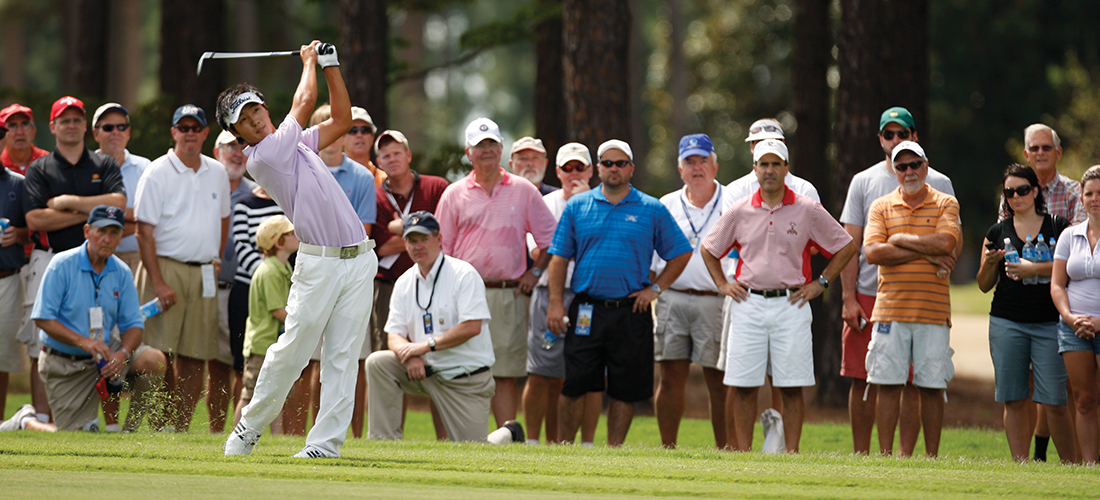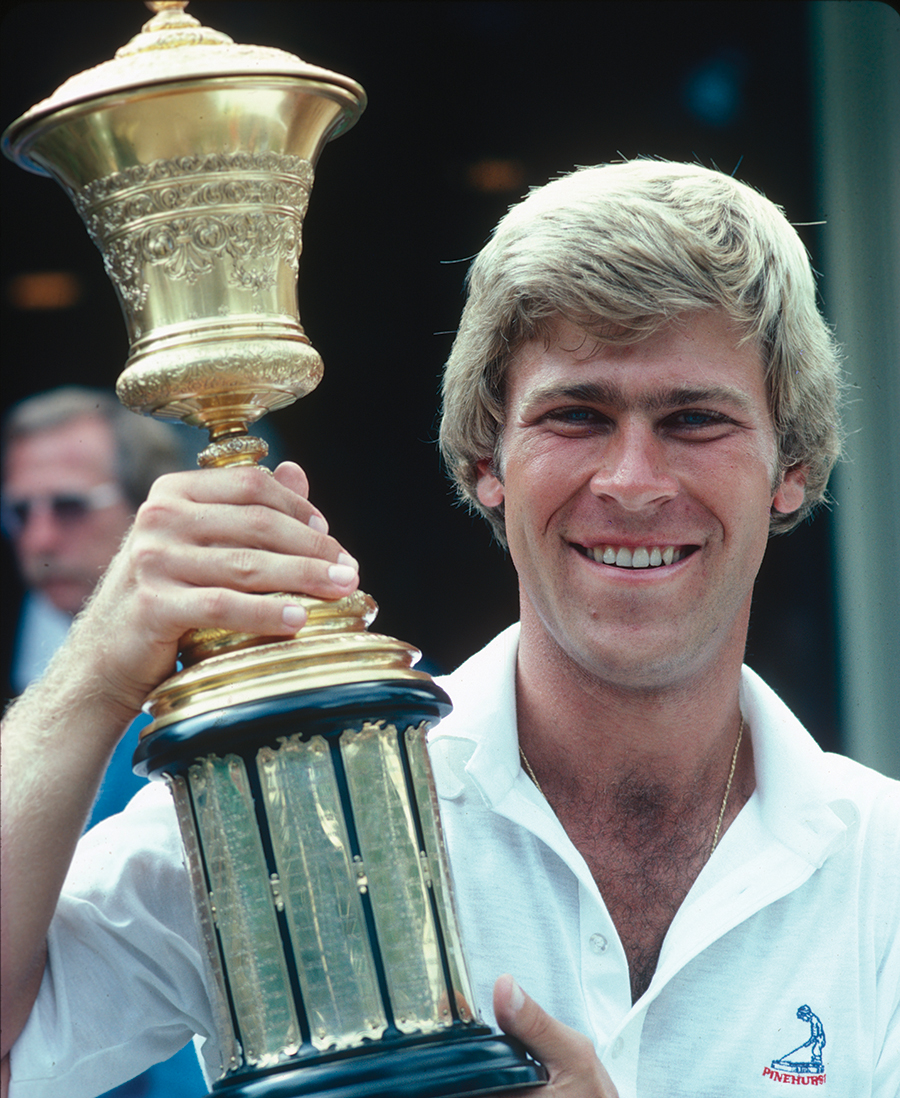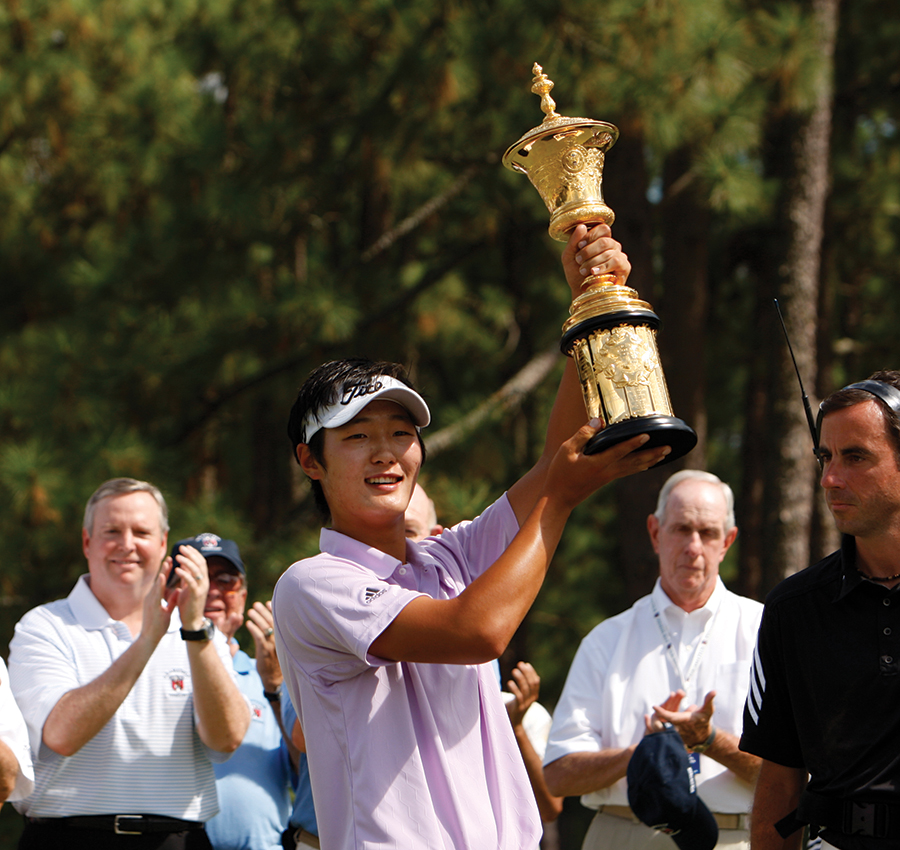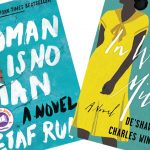
The U.S. Amateur returns to the Sandhills
By Jim Moriarty
When the United States Amateur Championship makes its fourth trip to the Sandhills of North Carolina this August, it brings with it the promise of great achievement and the baggage of great expectations. Whoever survives two rounds of stroke play qualifying followed by six matches will have reached the pinnacle of his amateur career and earned the scrutiny that just naturally accompanies winning a national championship. August will bring the heat, but the U.S. Amateur brings a little of its own.
It has been won by mortals and immortals. It’s been won by the greatest players who ever lived — Robert T. Jones Jr. (five times), Jack Nicklaus (twice) and Tiger Woods (three times in succession). It has been won by players who capture the odd major championship without scooping up double handfuls of them and still other players who have solid professional careers, winning tour events here and there along the way. It was won in back-to-back years by one of Pinehurst’s favorite sons, Harvie Ward. It’s been won by players who disappear almost entirely from the golf horizon and by others who become barons of the game, say, a president of the USGA (William C. Campbell) or the chairman of the Augusta National Golf Club (Fred Ridley).
Labron Harris Jr. won the title on Pinehurst’s No. 2 course in 1962 with Dwight Eisenhower in the gallery. Hal Sutton lifted the Havermeyer Trophy — named for the first president of the USGA, a Wall Street sugar tycoon — at the Country Club of North Carolina in 1980. And Danny Lee pushed aside Tiger Woods’ record to become the youngest winner of the championship when it returned to Pinehurst No. 2 in 2008. It was a record that would last for all of one year.
This year’s championship will be conducted on Pinehurst’s No. 2 and No. 4 courses, the latter recently revamped by Gil Hanse. The 312 entrants will play 36 holes, one round on each of the courses, to winnow the field to 64 for match play. The first five rounds of matches will be conducted on No. 2, and the 36-hole final will be played on No. 4 in the morning and No. 2 in the afternoon, a first for the 119-year-old championship.
Sutton’s victory in 1980 was, at the time, thought to be mere prelude. That summer he’d entered five tournaments, winning four — Pinehurst’s North and South, the Western Amateur, the Northeast Amateur and the U.S. Amateur. He was unbeaten in match play. The only title to elude him was the Southern Amateur, a stroke play event won by Bob Tway. Sutton’s father, Howard, owned an oil business in Shreveport, Louisiana, and there was talk of Hal becoming the next Bob Jones, someone who could afford to remain an amateur and who had enough game to compete with the professionals. He was, in fact, an amateur long enough to try, unsuccessfully, to defend his U.S. Amateur title — something that won’t happen this year, since the defending champion, Norway’s Viktor Hovland, has become a pro.

After winning the PGA Championship at Riviera Country Club three Augusts after he won the U.S. Amateur, instead of becoming the next Bob Jones, Sutton was in line to be “the next Nicklaus.” Neither happened. He did, however, win 14 times on the PGA Tour, including the ’83 PGA, where he led wire-to-wire, holding off a charging Nicklaus, the five-time PGA Champion, by a single shot. He also won the Tour Championship in 1998 and The Players Championship twice, once in ’83 and again in 2000, when he outdueled Woods, the man who truly was “the next Nicklaus,” also by a single stroke. A clip of Sutton’s approach to the 18th green at TPC Sawgrass can still be found on YouTube. “Be the right club today!” has become Sutton’s trademark.
Sutton won the U.S. Amateur on the 50th anniversary season of the Impregnable Quadrilateral when Jones won both the U.S. and British Amateurs and U.S. and British Opens in 1930. Unlike Jones, there was no ticker-tape parade for Sutton, just dinner at the old JFR Barn. Sutton would return to Pinehurst in October to play for the Eisenhower Trophy in the World Amateur Team Championship on the No. 2 course. He won that, too, taking the individual title by six shots. The U.S. team won by 27.
“I just loved No. 2,” Sutton says. “It favored a real good ball-striker, especially a good iron player. It kind of weeded out the weak. I think that’s what really makes great golf courses; they’re fair to people that hit the ball where they’re looking, and they’re much more difficult for people that can’t.”
Sutton is one of the players who felt the burden that can accompany a U.S. Amateur title. “At the time it was by far the largest thing I’d ever done,” he says. “It was a sense of great accomplishment, I remember that. I hoped it would be the beginning of big things.
“Everybody that wins the U.S. Amateur, it elevates the expectations for them. It causes people to watch to see what you are able to do. I think as you age you begin to realize that the only expectations that really matter are your own. I was the turtle instead of the rabbit most of the time.”
Big Easy Ranch, Sutton’s hunting, fishing and golf academy, is about 70 miles west of downtown Houston. He suffered a mild heart attack in 2014, the same year he had his second hip replacement. Now 61, Sutton was sufficiently inspired by Woods’ 2018 Tour Championship victory to give the Champions Tour one last go. He dropped 45 pounds but, even so, the body wouldn’t cooperate. He played a few events but was forced to withdraw from his last two by a left knee that needs replacing as much as the hips did.
In the final of the 1980 U.S. Amateur, Sutton beat Bob Lewis, 9 and 8. Lewis was 35 at the time, a professional who had regained his amateur status. Lewis was hobbled by blisters on the backs of his heels, giving him a painful, bowlegged gait. “He wasn’t as old as I am right now,” says Sutton, “but health issues do catch up with us. We’re certainly not what we once were.”
Labron Harris Jr., the son of the legendary Oklahoma State University golf coach Labron Harris Sr., won the first U.S. Amateur held on Pinehurst’s No. 2 course, coming back from a five-hole deficit to beat A. Downing Gray, an insurance salesman from Pensacola, Florida, 1 up. “I went there with the idea of not winning,” says Harris. “I’d check out of the hotel every day and I’d keep winning matches and I’d check back in. You don’t conceive of winning the U.S. Amateur. You shoot your 75 on the right day and you win if you play someone that shoots 77. That’s the beauty of match play and the fallacy of match play.”
One of Harris’ victims was Morganton’s Billy Joe Patton, the local favorite. “It was probably the least popular victory ever in North Carolina,” says Harris.
Gray held a 5-up lead through 21 holes of the final match. He set his afternoon’s cascading misfortunes in motion with a poor drive on the fourth, losing that hole, and then dropping the next four straight to two birdies and two pars, squaring the match after the eighth. On the 11th, Gray drove it against a formidable stand of love grass and Harris went 1-up.
Former President Eisenhower watched only four holes in the afternoon, taking his leave after the golfers hit their tee shots on the par-3 15th. The commander of D-Day was in a golf cart back in the 14th fairway when the two players were invited to meet him before he left. Harris went.
“A USGA man says, ‘Do you want to meet President Eisenhower?’ I said, ‘Sure.’ I’ve got a picture right here in my bedroom, a young man shaking hands with an ex-president.” Gray, his fortunes dwindling, wanted to concentrate on his golf. The next day the headlines read, “Gray Snubs Ike.” Ouch and ouch.
Harris played on the PGA Tour from 1964 to ’76 and won once, beating Bert Yancey in a playoff in the 1971 Robinson Open Golf Classic. “I played good for about half the years,” he says. After his playing career ended, he worked for the Tour for five years.
“I was the No. 2 man (to commissioner Deane Beman) but there were only 10 people in the office,” says Harris. “I did everything. I did the scheduling; the purse negotiations; ran the qualifying schools. I developed the senior tour. The money breakdown they play with now is my money breakdown. I came at the right time to be pretty effective. I was fortunate I worked with good people.”
After he left the Tour, he was the executive director of the Kemper Open for five years. Oh, and he won the Par 3 Contest at the Masters in 1964. There’s no golden trophy for that, but there is crystal.

When the Amateur last visited Pinehurst, it was won by an 18-year-old Korean-born New Zealander, Danny Lee, who beat Drew Kittleson, 5 and 4. Lee was six months younger than Woods was when he won the first of his three U.S. Amateurs in 1994. An Byeong-hun of South Korea blew that record out of the water the very next year, winning at age 17.
Lee’s professional career has been an up-and-down affair with an Official World Golf Ranking that’s gone as high as No. 34 (in 2016) and as low as 444 (in 2010). He won the Greenbrier Classic in 2015 and had seven other top-10s that year. He’s won once in Europe (when he was still an amateur) and once on the Web.com, now the Korn Ferry Tour. He shot an opening-round 64 at Bethpage Black in the PGA Championship in May to trail the eventual winner, Brooks Koepka, by a shot. On social media he’s best known for the practical jokes — traffic cones tied to cars; shaving cream in shoes; so forth and so on — he and Rickie Fowler seem to enjoy playing on one another.
In 2017, Lee suffered a torn ligament between L4 and L5 in his back. “I felt something and the only place I could go was lying on the ground,” he recalled during the PGA. “The next morning when I got up from my bed, I could not move my legs.” Since recovering, Lee has been working with California instructor George Gankas to get longer off the tee. “At first I wasn’t hitting it far enough to compete out here in a PGA Championship or U.S. Open.” Now he does.
That hasn’t altered the vagaries of Tour life much. “Some of the top 20 guys make it look easy, but it’s not always fairy tales and unicorns out here,” Lee said. “When you are fighting for your Tour card every year, it’s basically where you work. How would you feel when you lose your job tomorrow? And you put a lot of effort into it. You’ve tried your best and you did everything you could do and you don’t have a job tomorrow. That’s the same feeling we have. When the results are not there, it definitely gives you a little heartbreak and a little bit of terror, and some of the media is expecting me to do better than that.”
That’s a long way from 2008 when Lee, who had no intention of turning pro at the time, was reminded that the U.S. Amateur champion is traditionally paired with the defending champion at the Masters the following year. That just happened to be Woods. “Oh, my God,” he said. “That’s a special thing. Wow. I’m gong to beat him.”
Winning the U.S. Amateur is a great achievement, a long and arduous climb to the top of a grand hill — a vantage point where it’s possible to see just how heavy the mantle of potential can be. PS
Jim Moriarty is senior editor of PineStraw and can be reached at jjmpinestraw@gmail.com.





